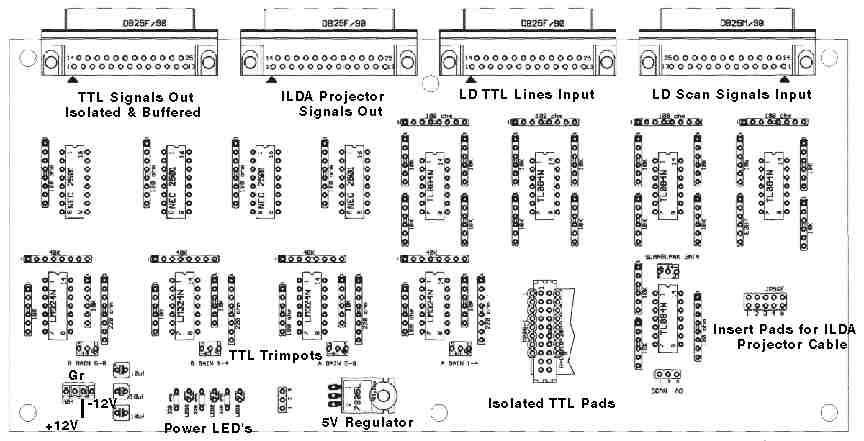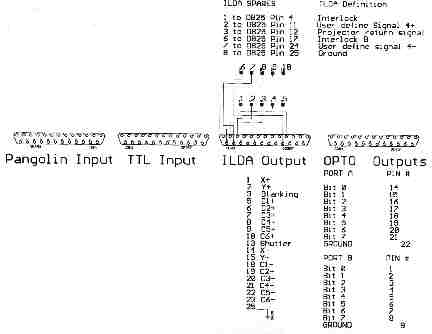

Our new TomCat board is an important low cost addition to all Pangolin LD systems. TomCat provides strong clean differential signals to insure sharp noise-free scanned graphics. Differential signals are the only way to survive noisy electrical environments as found in corporate promotion stage settings and club lighting systems. Drive signals can be used on long signal feeds -- tested in systems at over 100 feet! TomCat saves your QuadMod32 board from blown components that nearly always result from accessing the TTL signals without opto-isolation.
Interfacing between your QuadMod32 board (or other signal source) and your projector or scanhead, this board provides differential signals: X, Y, 6 Colors, and blanking, from the standard single-ended +-5V and 0-5V signals of the QuadMod32. It also provides the vitally necessary opto-isolation outputs for the 16 TTL signals on the QuadMod32. You can access them as isolated TTL or amplified 0-10V signals for direct use on projectors. The board accepts standard DB25's so it is easy to interface to the two QuadMod32 output connectors. TomCat has two outputs: ILDA standard DB25 scan signals and DB25 isolated TTL lines.
TomCat can of course also be used on other software systems that have similar output signals. The third-generation board is 6" X 6.5" and runs on +-12 volts. An additional feature is the ability to trimpot adjust the amount of voltage for the blanking signal. This allows the Pangolin TTL blanking signal to be used exactingly for scanner blanking systems. This board has been tested for use with NEOS and MVM PCAOM's and Cambridge/General Scanning/CatWeazle scanners and drivers.
TomCat PCB $400 Plug-and-Play TomCat, half-rack box with a power supply $625
 |
 |
![]()